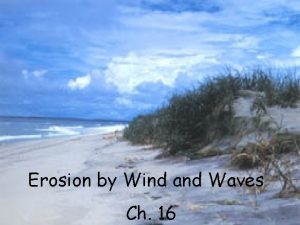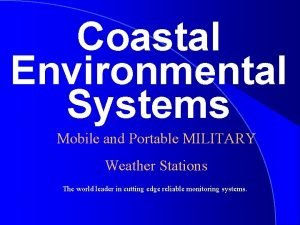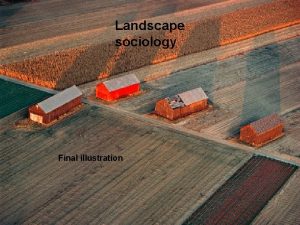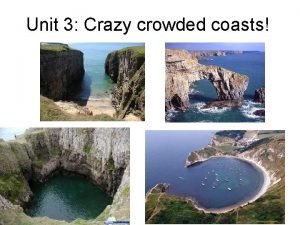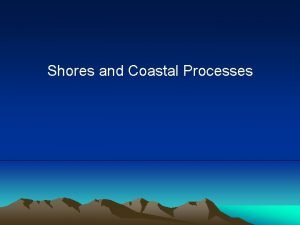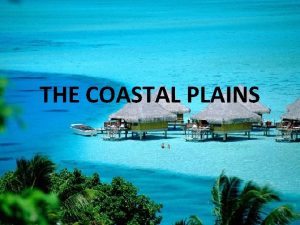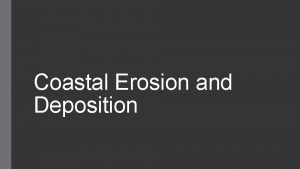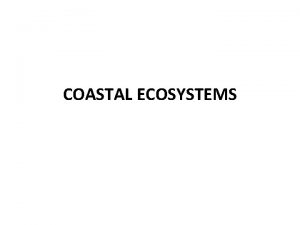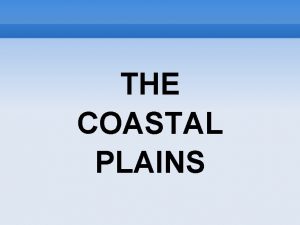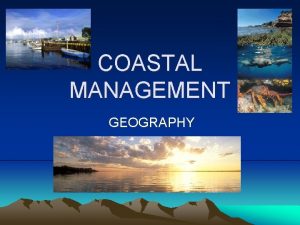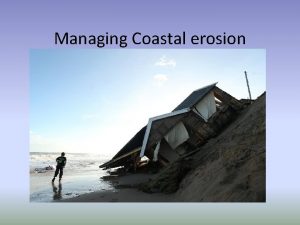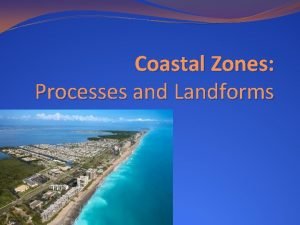Coastal Processes l Understanding coastal processes is important












- Slides: 12

Coastal Processes l Understanding coastal processes is important when trying to preserve and protect beaches l In Florida, 75% of the population (10. 5 million) live within 10 miles of the coast

l Waves are present along all coastlines, and are created by wind blowing over the ocean – Wave action is responsible for the presence of well- sorted, well-rounded sands along the beach. Waves are often the main agent of erosion – As waves approach the shoreline they grow in height and eventually break. The zone where they break is termed the surf zone

– As a wave crest approaches an irregular coastline it bends. This is called wave refraction, which causes wave energies to be concentrated at headlands and dispersed at bays

– Waves approaching a shoreline at an angle cause two important processes l l Longshore Drift – the gradual lateral movement of sand along the beach Longshore Current – a shallow-water current parallel to the shore

l Tides are another process that occurs along every shoreline – Tides are the twice daily rise and fall of the sea, and are caused by the gravitational attraction of the Moon, and to a lesser degree the Sun

l Coastal Setting and terminology

Beach Profile

l Accretion or erosion of a beach is dependent on its sand budget. There are several inputs and outputs of sand to a beach

– When the total inputs equals the total outputs, the beach is said to be in equilibrium. If the beach is not in equilibrium either erosion or deposition will occur – Often see interesting erosional and depositional formations Erosion of a cliff to form a wave-cut terrace Deposition of sand at Cape Cod to form a spit

l When sand outputs is greater that sand inputs beach erosion occurs – Humans have tried to slow beach erosion by stabilizing the beach. There are two types of stabilization techniques 1) Hard Stabilization – Emplacement of hard structures, including groins, jetties , and sea-walls, to protect the beach. Often involves significant construction and coastal engineering 2) Soft Stabilization – Replace lost (eroded) sand with new sand. New sand can either be sediment picked up from dredging, pumped from offshore, or from sand deposits on shore. Costs roughly $1 million/ mile

Two examples of the use of groins. These structures trap sand that is being moved along by longshore drift, causing a build up of sand on one side and a depletion along the other. This is a dangerous practice and could lead to “New Jerseyization” of the shoreline

l Sea-level rise is another problem facing coastal communities. – Global warming may lead to increased rates of sea-level rise. – Most models expect a rise of 1 -1. 5 meters within 50 years
 Concurrent in os
Concurrent in os Newspaper article format
Newspaper article format From most important to least important in writing
From most important to least important in writing Least important to most important
Least important to most important Barchan dune
Barchan dune Coastal environmental systems
Coastal environmental systems Coastal
Coastal Coastal environmental systems
Coastal environmental systems Biosphere definition biology
Biosphere definition biology Natural resources in the plains
Natural resources in the plains Coastal landscapes a level geography
Coastal landscapes a level geography Waveney local plan
Waveney local plan Coastal kung fu
Coastal kung fu




